Key takeaways:
- Effective visual storytelling relies on elements like perspective, color, and pacing to evoke emotions and enhance narrative depth.
- Using techniques such as visual metaphor and strategic transitions can enrich the storytelling experience and engage the audience’s imagination.
- Collaboration and experimentation with storytelling styles, including minimalism and nonlinear narratives, can deepen viewer connection and provoke thought.
- Audience feedback is crucial for understanding emotional impact and guiding future storytelling efforts.
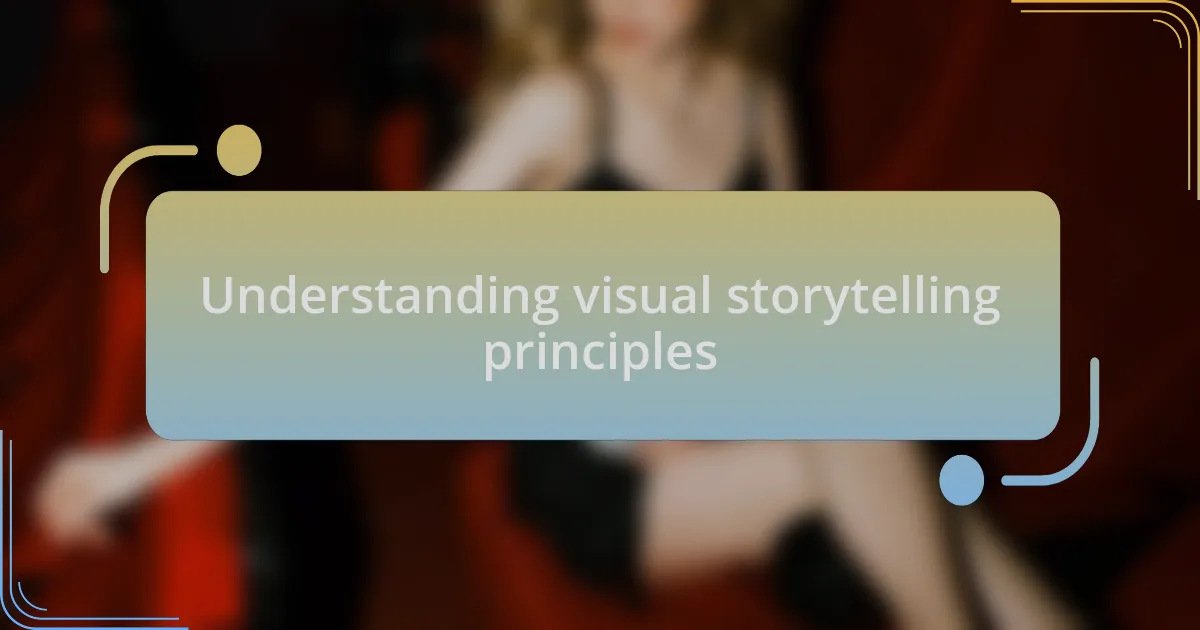
Understanding visual storytelling principles
Visual storytelling principles serve as the backbone of effective communication in film. Through my experience, I’ve found that every visual element—from color to composition—works together to evoke emotions and drive the narrative forward. Have you ever noticed how a simple change in lighting can completely alter the mood of a scene? This understanding is essential in crafting a compelling visual story.
One of the most profound lessons I’ve learned is the power of perspective. Choosing a specific angle can change how the audience perceives a character’s emotions or intentions. For instance, during a project where I filmed a heated argument, I opted for close-ups to capture the raw emotions on the actors’ faces. This choice not only anchored the tension but also drew the viewers into a visceral experience. Have you tried experimenting with different angles in your projects?
Additionally, pacing within a visual narrative is crucial. I remember a time when I was invested in the flow of a scene, but it felt sluggish and unengaging. It was then I realized that mixing shots of varying lengths could add dynamism and keep the audience’s attention. By experimenting with these techniques, I discovered how to create a rhythm that enhances the story without overwhelming the viewer. What are your strategies for maintaining an engaging pacing in your work? Each of these principles is an opportunity to deepen the connection with your audience.
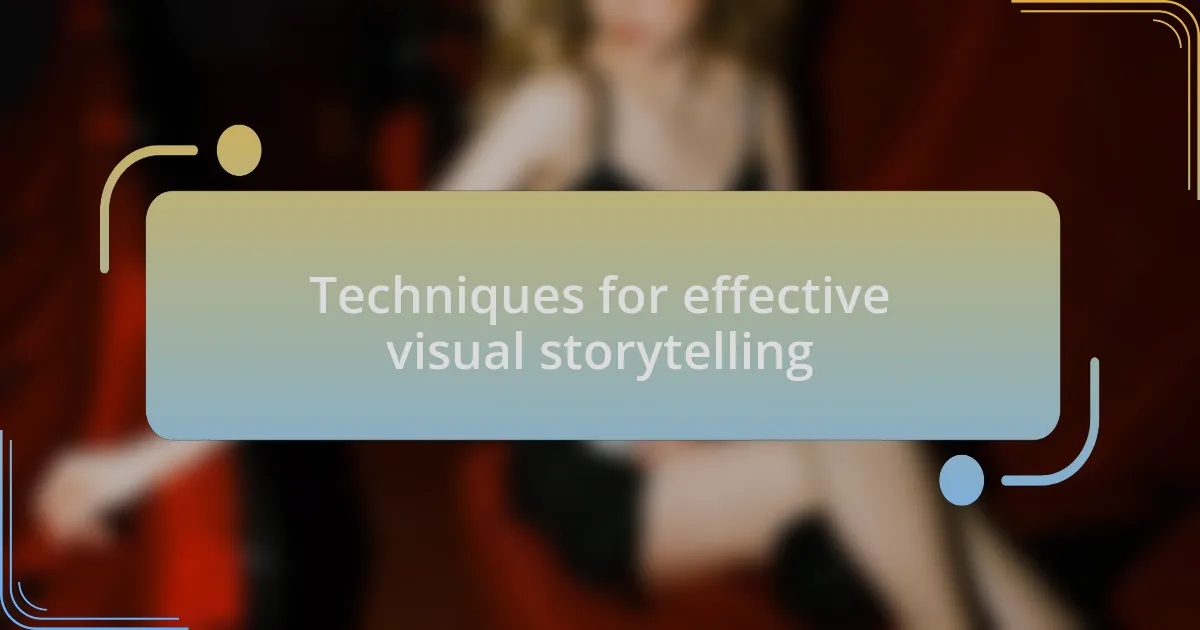
Techniques for effective visual storytelling
Effective visual storytelling hinges on the use of color, which can profoundly influence the emotions conveyed in a film. I recall a project where I used a muted color palette to reflect a character’s internal struggle. The desaturated tones created a somber atmosphere that resonated deeply with the audience, making them feel the protagonist’s despair. Have you considered how color choices can elevate the narrative in your own work?
Another technique that has served me well is the strategic use of visual metaphor. There was a scene in one of my films where I chose to feature an hourglass to symbolize the passage of time and the character’s increasing desperation. This subtle visual cue added layers of meaning without overt exposition, engaging the audience’s imagination. Do you often find ways to incorporate metaphors in your storytelling to enhance depth?
Finally, I believe transitions play a pivotal role in maintaining a cohesive visual flow. In a recent project, I employed match cuts to bridge scenes thematically and visually. This technique not only smoothened the narrative progression but also provided a satisfying sense of continuity, helping viewers stay immersed in the story. How might you experiment with transitions to create a more seamless viewing experience?
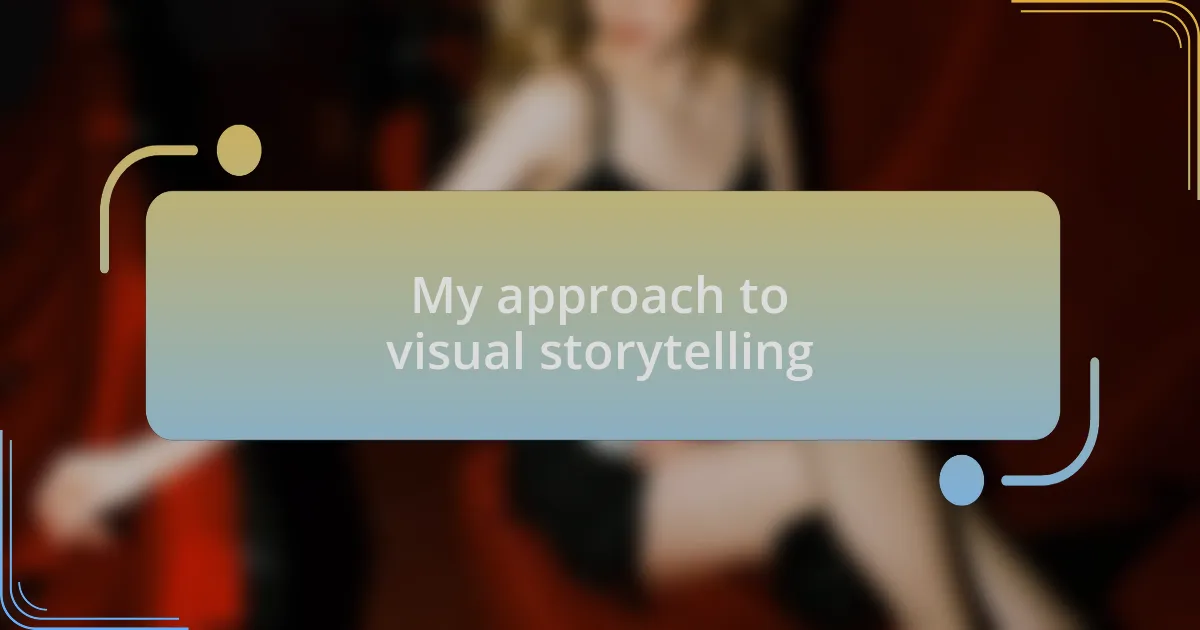
My approach to visual storytelling
My approach to visual storytelling emphasizes the power of perspective. When crafting a scene, I often think about how the camera angle can profoundly influence the viewer’s emotional response. In one particular project, I decided to shoot a pivotal moment from a low angle, placing the audience in the character’s shoes, effectively making the situation more immersive. Have you ever considered how a simple shift in perspective can transform the way a story is perceived?
I also prioritize the interplay of light and shadow in my work. During a film that explored themes of betrayal, I experimented with chiaroscuro lighting. By casting deep shadows, I not only heightened tension but also visually represented the darkness within the characters. This technique brought an emotional weight to the scenes that I believe resonated deeply with the audience. How do you use light to convey mood in your storytelling?
Lastly, I find that incorporating subtext brings layers to my visual storytelling. In a recent project, I chose to subtly display a family photo in the background to hint at a character’s longing for connection. This detail might go unnoticed by some, but for me, it adds a rich layer of meaning. It keeps viewers engaged, prompting them to look deeper into the narrative. How often do you weave such elements into your visuals to foster viewer engagement?
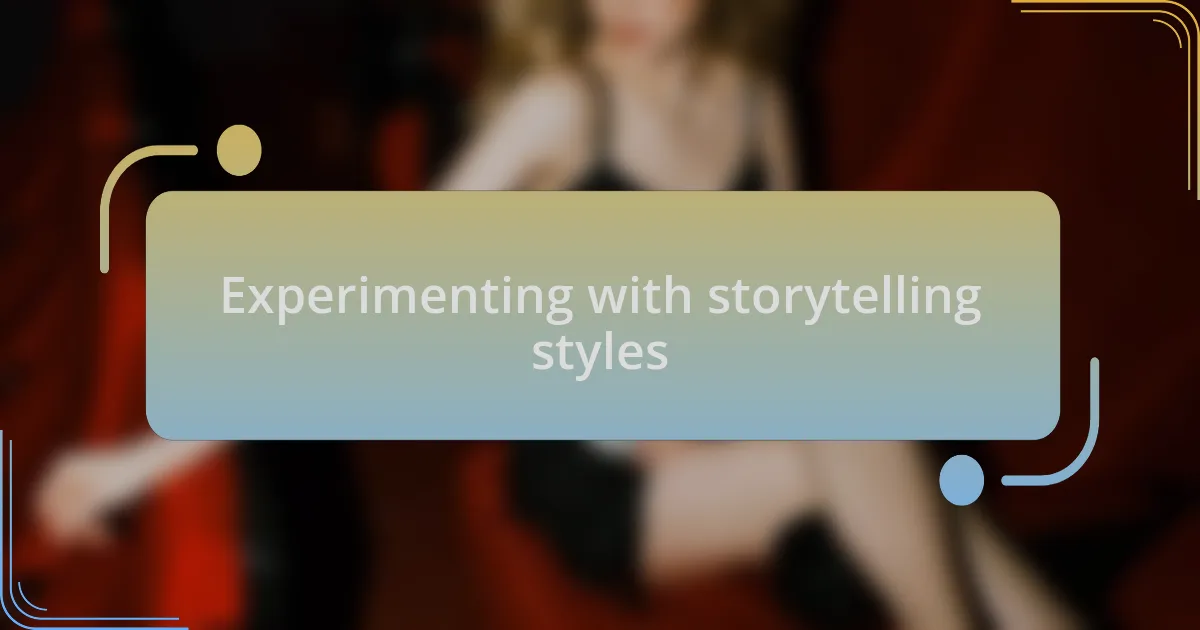
Experimenting with storytelling styles
Exploring different storytelling styles can truly open up a project. For instance, I once experimented with a nonlinear narrative in a short film, presenting events out of order. This approach created a puzzle for the audience, engaging them actively as they pieced together the timeline. Have you ever tried crafting a story where the thrill of discovery outweighed the traditional sequential flow?
Collaboration also plays a crucial role in shaping storytelling styles. While working on a documentary, I invited input from the subject, allowing their unique perspective to guide the narrative. This exchange not only enriched the story but also deepened my connection to the subject matter. How important is collaboration in your own creative process?
I also find the power of minimalism captivating. In a recent project, I stripped away unnecessary dialogue and visuals, focusing solely on expressions and gestures. This choice allowed the emotions to resonate deeply, prompting viewers to fill in the gaps with their interpretations. Don’t you think sometimes less really is more when it comes to storytelling?
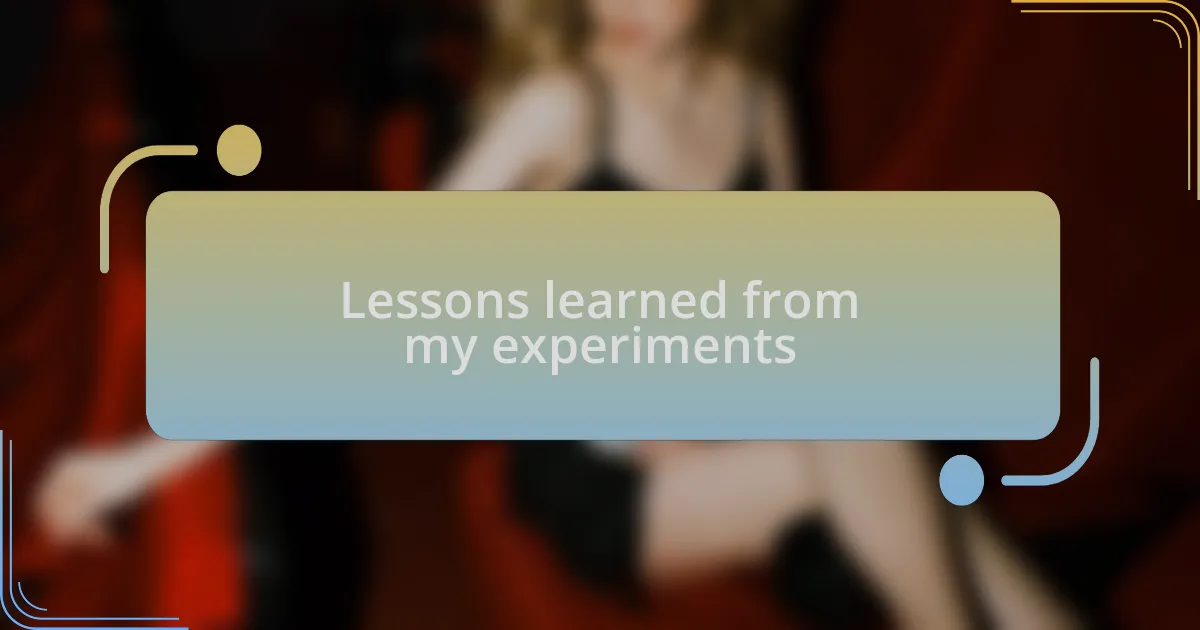
Lessons learned from my experiments
One major lesson I learned from my experiments is the incredible value of risk-taking in storytelling. In a project where I decided to use a handheld camera for an intimate interview, the raw, shaky footage created an authenticity that resonated with viewers. Have you ever felt that a different technical choice transformed the emotional weight of your story?
Another insight came from exploring contrasting visual styles. During the editing process of a music video, I juxtaposed vibrant, fast-paced shots with slower, muted sequences. This dichotomy not only heightened the emotional impact but also made the audience reflect on the relationship between chaos and calm. What unique visual contrasts have you explored in your own work?
Finally, I discovered that audience feedback can be a goldmine for improvement. After screening a short film, I engaged with viewers about their interpretations and emotional reactions. This dialogue revealed perspectives I hadn’t considered, ultimately guiding my future projects. How has audience insight influenced your storytelling journey?